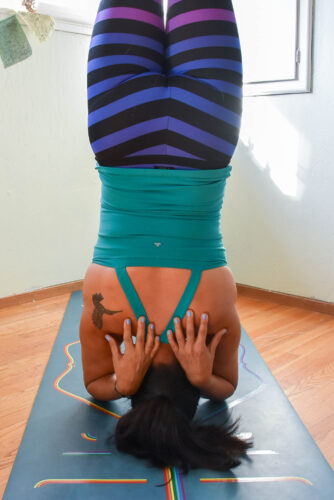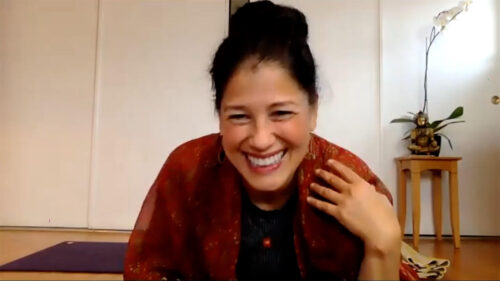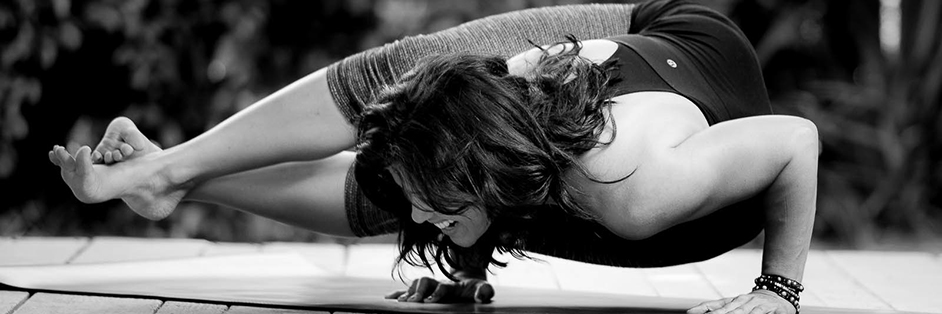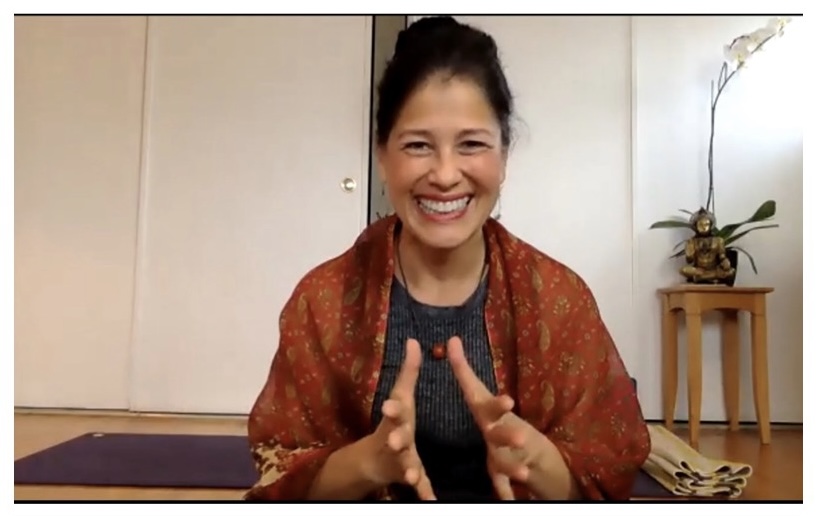CANCELLED: Intro to Mysore Style Ashtanga Yoga (4-week course)
As of 20 October 2021, this workshop has been cancelled due to lack of interest. We can explore bringing it back some time in 2022.
UPCOMING WORKSHOP
Intro to Mysore Style Ashtanga Yoga
Saturdays: October 30th, November 6th, 13th, and 20th 2021, 3:00 – 4:30 pm
I am excited to announce that I will be teaching another Introduction to Mysore course, as I did in January of this year. The 1.5 hour workshop-style sessions of this 4-week course will occur on Saturday afternoons online (via zoom). Students will learn the various aspects of Ashtanga Yoga, including posture, breathing, and dristhi, which create the basis for practice as a moving meditation.
We will start by learning the elements of Surya Namaskar (Sun Salutation) forms A and B. These sequences are the foundation of Ashtanga Vinyasa Yoga and establish the basic form and flow of the greater series of postures. Building on this foundation, students will be introduced to the standing, some of the seated, as well as the finishing postures. During each session, students will be led through the postures and then they will be asked to perform the postures on their own.
This 4-week introductory course includes 3 weeks of unlimited access to the Ashtanga classes (mysore style and led practice) at Breathe Together Yoga (October 31st- 19th). More details below as well as on on the BTY website.
MYSORE SESSIONS:
Students will be encouraged to join the morning mysore sessions (Sun – Thurs) where they will practice self-paced with the mysore community. In this mysore-style practice, students have time to break down, investigate, and repeat postures. These sessions are included in the price of the course. Note: Currently, mysore sessions are taught online with the exception of Sunday – now being offered both in-studio (masks required) and online.
LED PRACTICE:
Once a week, there is a traditional Led Primary class (Fri) where practitioners practice the poses as they have learned them at the pace of the traditional sanskrit count. It is in this weekly led practice helps reinforce the sequence, and helps the practitioner create steadiness within their practice. This “led” primary series, as taught at BTY, is open to all levels and will have modifications given throughout.
Consistency is Key
 It is very important to me to maintain consistency in my own practice as a student. Not only do I learn about myself (through this self-study practice), but I feel that I am better able to teach my students if I have explored the asanas for myself (even if my body is different).
It is very important to me to maintain consistency in my own practice as a student. Not only do I learn about myself (through this self-study practice), but I feel that I am better able to teach my students if I have explored the asanas for myself (even if my body is different).
On the days when I am not teaching, I enjoy practicing with my community as one of the students. Not only does this let the students know what I can and cannot do, I believe it also shows the community how dedicated I am to our Ashtanga Program. I don’t just teach; I rely on it for my own development.
Well, my own sanity too.
Living Out Loud
Just over 2 years ago, my yoga teacher sat down beside me on my mat to have a heart-to-heart with me. She is a very intuitive and caring person and saw that I was closing off. The backbends that I had worked so hard to develop where losing their beautiful arch and you could see that I was holding back. She wanted to help me find openness in my heart center, not just in my physical backbends but deep within. As much as I trusted her to hold space for me to do the work, I also knew that the timing just wasn’t right. I was working through a huge heartbreak and felt the need to protect my heart.
In the year that followed, she held space for me to work through it. If I broke down in tears after back bending, she didn’t make a big deal out of it. Because if emotions come up in this practice and our mat is a safe place for us to work through it. Within the Mysore Room of my yoga studio, I felt safe to let the sadness, anger, frustration, and other emotions go right there on my mat, with my fellow practitioners nearby. Meanwhile, my teacher continued her work in the room, helping the students just as before. I appreciated that.
By the time COVID-19 had us all staying within the walls of our homes, an entire year had passed. And although, I thought I’d be on the other side of the loss by then, sheltering-in-place uncovered a different level of pain for me. A pain that showed up on my computer screen in an in-your-face, take-THIS sort of way. At times, I felt as if all the work I had done was a lie; I felt those protective walls thickening and my heart closing off once again.
As the months passed, it was evident that if was to ever be freed from the fortress of protection that I had built around me, I had much more work to do. Read More
Self Care
Recently, the yoga studio sent the teachers an email asking us to respond to some questions about our journey through the first year of the coronavirus (COVID-19) pandemic. The request was to write a few sentences, answering one or all of the following questions
- What have you learned over the past year?
- How has your practice changed, on or off the mat?
- How have you learned to care for yourself and/or others in ways you haven’t before?
 My responses to the three questions was somewhat tarnished with negativity as I was navigating some new territory in my grieving process coupled with a few unfortunate events. [I’m being intentionally vague; this is not the place for that stuff]. The studio owner decided to go with my response to Question #1.
My responses to the three questions was somewhat tarnished with negativity as I was navigating some new territory in my grieving process coupled with a few unfortunate events. [I’m being intentionally vague; this is not the place for that stuff]. The studio owner decided to go with my response to Question #1.
Although I have lived my life trying to put on a happy face for others to see, I didn’t think that I could capture a realistic smile for the post in real time. So, I pulled stills from the class recording of the final session with my Intro to Mysore students that ran in January to accompany the IG post. I was on a high that day – feeling the joy of sharing the practice I have grown to love with 7 beautiful souls. It showed on my face.
The fact that many of our members are going through a lot of struggles right now, it was decided that my response to Question #3 may have been a bit too honest for the BTY IG. Still, I wonder if comfort could be found in knowing that, although I show up wearing my best “happy face”, I too am struggling.
“There are days when I wake up and no amount of coffee or makeup can mask the loneliness and pain that sometimes overwhelms me. I tell myself that I’m not the only one feeling this way and just show up as is. As a result, I help myself by showing up for others.”
I wrote those words, yet was hesitant to do my part and “show up” for this morning’s mysore practice. I rolled out my mat and began my practice offline with only Kobe, my slumbering puppy, in sight and classical music softly playing. The practice wasn’t any easier. But when I met up with kapotasana, the tears had already begun to surface and I had no reason to bury them. I acknowledged the painful emotions and asked [my] God if he/she would keep me safe if I were to shed my armor and allow my heart to open more fully. The tears fell as if to the music: gently, with ebbs and flows all the way through kapotasana and supta vajrasana. Then, Kobe did something cute as I did my bakasana. And I laughed out loud. This short bit of laughter was enough to signal my readiness to show up for my community. So, I joined the mysore zoom.
You see, although for the past year, I have made a point to bury my emotions so that I could show up for my community, I am learning that it’s equally important to take some time to care for myself. This seems especially true right now, with all that I am navigating mentally and emotionally. I’m still here for my family and friends, but I need to grab that oxygen mask and breathe in a few slow, deep breaths so that I can think clearly and be wholly present. If you are going through something similar, I recommend the same to you.
“We can’t share with others a resource that we lack ourselves.” – Johnson, W and Humble, A (2020)
Thanks for reading. Now, it’s time to get on my mat. I wish you all a beautiful day.
Keeping Up with the Count
A couple weeks ago, I subbed a Led Half Primary Series Class for Beginners. There was a question in the chat that I didn’t see until everyone was in savasana and the person who wrote it had already dropped off. She commented how often her breath doesn’t seem to synch up with the teacher’s count in Ashtanga classes. She asked if she should try to quicken her breath or if it’s okay to just be in the state of the pose for only 3-4 breaths.
Of course, the following morning I would be in the traditional Led Primary Series class experiencing this very thing that student asked about. In parts of the practice, I’d still be working to get the bind as the count would begin. Sometimes, I can let it go but other times my attachment to both the bind and the 5 breaths easily gets the best of me. I know I can linger here and catch up with the class in downward facing dog or I move on with the rest of the class knowing that those 2 breaths will be there tomorrow.
Later on in the practice, the count seems to slow way down. I check in to see if I can deepen my breath a bit. Maybe her 15 breaths will equal 20 of mine (instead of 25). Either way, it’s all good. Maybe it’s my longtime athlete mindset, but I don’t mind the difference here as much as when I am behind. Read More









